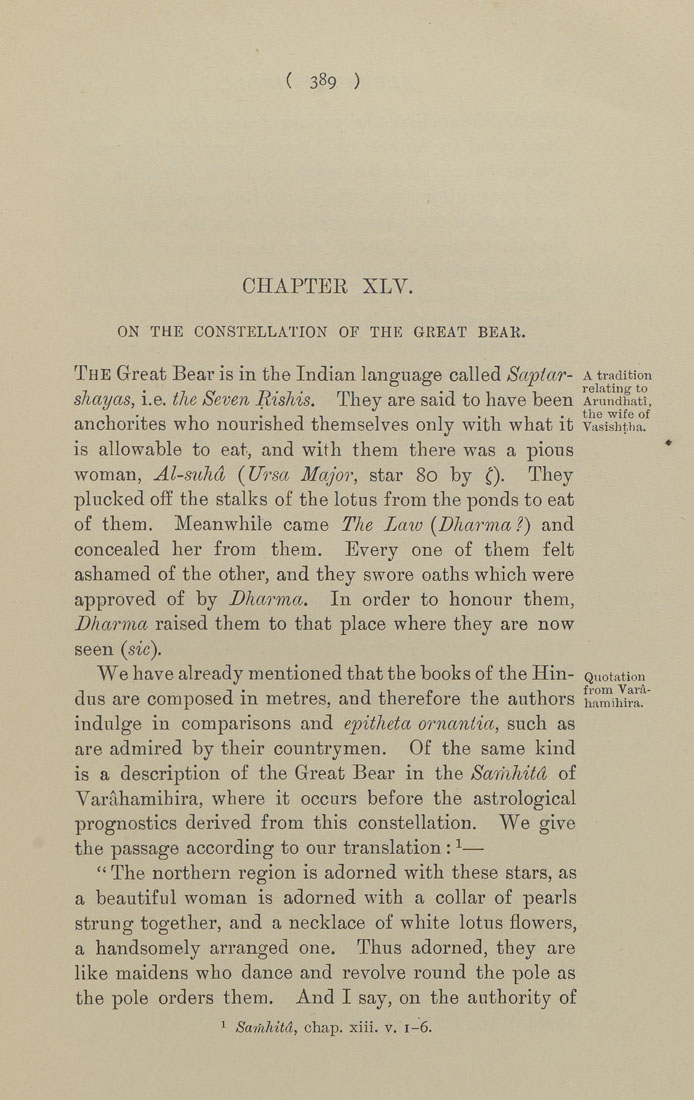Bīrūnī, Muḥammad ibn Aḥmad, Alberuni's India (v. 1)
(London : Kegan Paul, Trench, Trübner & Co., 1910.)
|
||
|
|
|
|
| Page 389 |

( 389 ) CHAPTEE XLV. ON THE CONSTELLATION OE THE GEEAT BEAK. The Great Bear is in the Indian language called Saptar- a tradition shayas, i.e. the Seven Bishis. They are said to have been Arundhati, anchorites who nourished themselves only with what it vasishtha. is allowable to eat, and with them there was a pious woman, Al-suhd (Ursct Major, star 80 by f). They plucked off the stalks of the lotus from the ponds to eat of them. Meanwhile came The Law (Dharma.?) and concealed her from them. Every one of them felt ashamed of the other, and they swore oaths which were approved of by Dharma. In order to honour them, Dharma raised them to that place where they are now seen (sic). We have already mentioned that the books of the Hin- Quotation dus are composed in metres, and therefore the authors ha^ihir^ indulge in comparisons and epitheta ornantia, such as are admired by their countrymen. Of the same kind is a description of the Great Bear in the Samhitd of Varahamihira, where it occurs before the astrological prognostics derived from this constellation. We give the passage according to our translation : ^— " The northern region is adorned with these stars, as a beautiful woman is adorned with a collar of pearls strung together, and a necklace of white lotus flowers, a handsomely arranged one. Thus adorned, they are like maidens who dance and revolve round the pole as the pole orders them. And I say, on the authority of 1 Sarhliitd, chap. xiii. v. i-6. |
| Page 389 |







